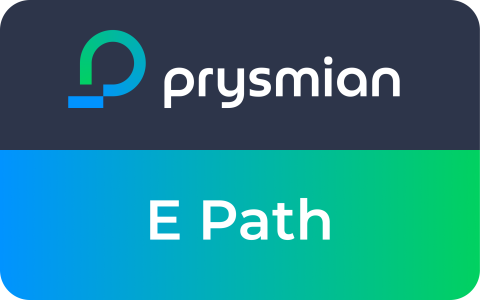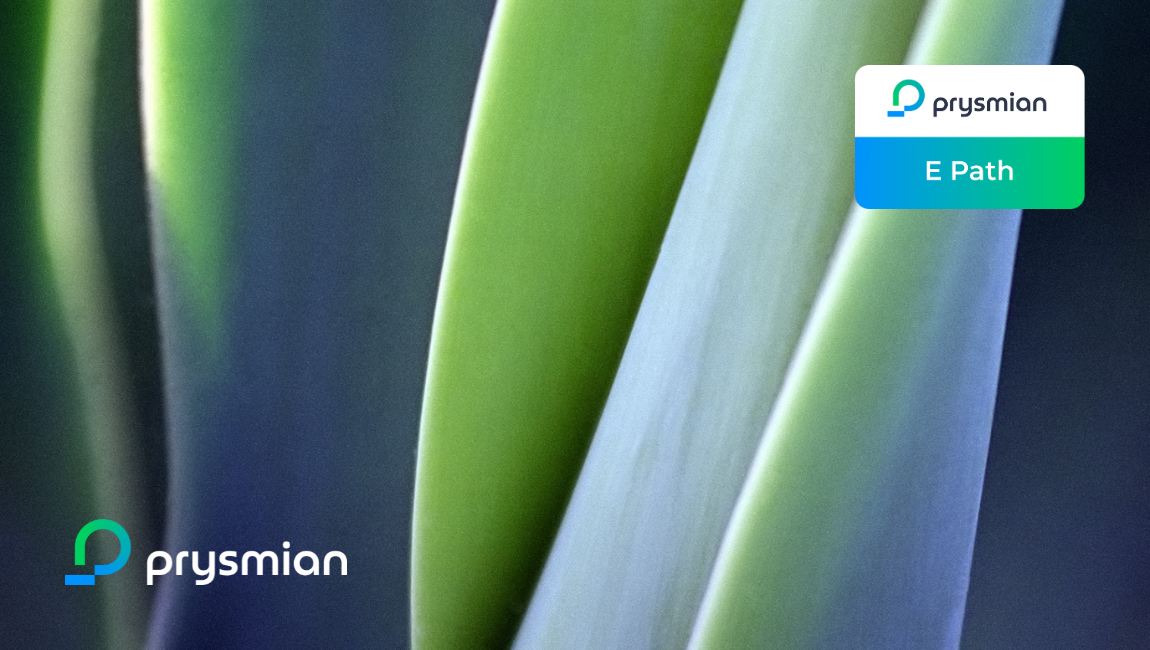Prysmian introduces E Path: the first label for low environmental impact cable solutions in the installation sector
Prysmian, a global leader in the energy transition and digital transformation, introduces E Path, the cable industry's first label for low environmental impact products and cable solutions. E Path marks an important step towards sustainability and environmental awareness and sets a new standard in the cable sector by providing insight into the sustainable performance of the entire cable portfolio.
What is E Path?
E Path is Prysmian’s concept which provides insight into the cable portfolio with low environmental impact. It helps customers make informed decisions and reduce their carbon footprint. It is the first label of such in the cable industry, replacing former ECO CABLE label introduced by Prysmian in 2021.
E Path is a new and enhanced concept and is derived from the most common Standards as well as in line with European legislation. The E Path label endorses that cables produced under this initiative are not only energy-efficient and respectful of the environment but they are also manufactured following the state of the art environmental criteria, ensuring the low impact of both products and processes.
The six criteria of E Path
To be labeled as E Path, the cables are evaluated based on the following six measurable and recognized criteria:
- Carbon Footprint: Assesses the CO2 emission during the life cycle of the cable, from cradle to gate.
- Substances of Very High Concern: Considers the absence of substances that are carcinogenic, toxic to reproductive health, or hazardous to the environment.
- Recyclability/Circularity: gives a rating depending on the percentage of recyclable materials present in the cable.
- Recycling Input Rate: Evaluates and rates the presence of recycled materials in a cable.
- Environmental Benefits: gives a premium to cables with a lower CO2 impact or used for sustainable applications and to cables with a higher CPR class.
- Cable Transmission Efficiency: Measures the efficiency of the cable, how well a cable can transmit energy or data without loss.
Bureau Veritas certification
Bureau Veritas, a globally recognized leader in testing, inspection, and certification, has validated that activities related to E Path are carried out in compliance with the Prysmian protocol in the plants of Emmen (NL), Pikkala (FI) and Oulu (FI), as well as in Muscat (OMAN). The validation program is ongoing to cover more and more locations. As required by the EU Green Claim Directive, a third-party validation makes the label E Path a valuable tool to either assure customers these cables meets the stringent environmental criteria established by Prysmian and it’s a critical step towards achieving the company's sustainability goals.
E Path & E-LINE: what’s the difference?
While E Path represents a global comprehensive concept, E-LINE is a sustainably enhanced alternative product line that focuses on usage of more sustainable materials, packaging and logistics resulting in improving carbon footprint. For instance, the products are:
- locally manufactured with renewable energy,
- made of 100% recycled copper, biobased and recycled raw materials,
- where possible, delivered with emission-free transport,
- sustainably packaged,
- and more.
Manufacturing of E-LINE products began as a pilot initiative in 2019. However, with the growing emphasis on ESG and increasing market demand, the E-LINE portfolio continues to expand, offering a broader range of sustainably advanced cable solutions. To date, E-LINE covers 4 product families for low-voltage installations with a goal of adding more every year. Also to medium and high voltage segments.
EPD vs. E Path: Simplifying Choice with Transparency
An Environmental Product Declaration (EPD) is a comprehensive third-party verified standardized certificate. It provides detailed information about the environmental impact of a product throughout its life cycle in a quantitative and transparent manner. In case of a construction project, the EPD certificate is one of the main tools that helps compare various products and guide projects towards strategically important environmentally friendly options. However, an EPD does not classify a product as “sustainable” – instead, they only present key environmental indicators to support informed decision-making.
The E Path initiative, developed by Prysmian, builds upon certain stages of a Life Cycle Assessment which are also part of an EPD. However, E Path is a tool to drive Prysmian customer to improve the impact of their current product portfolio all along the development path proposed by the R&D teams of the Group. For instance, for all E-LINE products EPDs are available allowing customers to get acquainted with the CO2 footprint and compare with other alternatives, if needed. Moreover, all E-LINE products are E Path labelled, giving installers confidence on their path to lower the impact on the Environment day by day.
"E Path is more than a label; it’s a testament to our leadership in Sustainability and our commitment to shaping a greener future for the wire and cable industry," said Dennis Marks, CEO of Prysmian Netherlands. "By providing solutions that enable our customers to make environmentally responsible choices, we are not only supporting their sustainability goals but also driving meaningful change across the entire chain.
Read more about E Path: E Path | Prysmian




